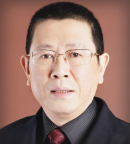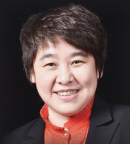The Chinese Society of Clinical Oncology (CSCO) and ASCO have approved a joint guideline for the treatment of stage II to IVA nasopharyngeal carcinoma.1 The guideline was drafted by a panel of Chinese and U.S. experts and provides, for the first time, a clear set of recommendations for the use of chemotherapy (concurrent, induction, and adjuvant) in combination with radiotherapy in patients with nasopharyngeal carcinoma.
“This guideline aims to clarify the fundamental principles of radiotherapy planning and how to combine chemotherapy with radiotherapy in this subset of patients with nasopharyngeal carcinoma,” said guideline Co-Chair Jun Ma, MD, Director of the Key Laboratory of Multidisciplinary Diagnosis and Treatment of Nasopharyngeal Carcinoma, Sun Yat-sen University Cancer Center in Guangzhou, China.

Jun Ma, MD

Ying Sun, MD
“More than 70% of new nasopharyngeal carcinoma diagnoses in 2018 occurred in East and Southeast Asia; therefore, nasopharyngeal carcinoma remains a significant public health problem in this region,” added guideline Co-Chair Ying Sun, MD, of the State Key Laboratory of Oncology in South China. “This emphasizes the significance of this guideline for providers and patients from endemic areas.”
Combining Chemotherapy With Radiotherapy
Guideline recommendations were based on the findings from 108 studies identified in a literature search of review articles, meta-analyses, and randomized controlled trials published from 1990 through 2020, and they address five clinical scenarios in nasopharyngeal carcinoma. Guidance is provided on the use of recommended radiotherapy techniques and fractionation regimens for patients with stage II to IVa nasopharyngeal carcinoma, and on the use of recommended chemotherapy sequence in addition to radiotherapy for patients with stage II to IVa nasopharyngeal carcinoma. In addition, the guideline lists chemotherapy options for patients with nasopharyngeal carcinoma receiving concurrent chemoradiotherapy, those receiving induction chemotherapy, and those receiving adjuvant chemotherapy.
In highlighting the major clinical takeaways of the guideline, A. Dimitrios Colevas, MD, of Stanford University and member of the guideline Expert Panel, said that the recommendations aim to help clinicians identify patients with early disease who may benefit from radiation, while preventing the overtreatment or undertreatment of patients with nasopharyngeal carcinoma. “The second major topic is who should get additional systemic therapy after radiation or before radiation, and—which do you do—before (induction) or after (adjuvant),” he said. “This has been a major controversy.”

A. Dimitrios Colevas, MD
Dr. Ma said that, in general, patients with a lower disease burden could receive lower-intensity chemotherapy. “For T2N0 patients, chemotherapy is not routinely recommended in this guideline, while for T1 or T2N1 patients, concurrent chemotherapy may be offered—particularly for T2N1 patients,” he said. “For T3N0 patients, concurrent chemoradiotherapy should be offered; adjuvant or induction chemotherapy may also be offered if there are adverse features such as bulky tumor volumes or high Epstein-Barr virus [EBV] DNA copy number.”
He further noted that the lack of head-to-head trials comparing induction chemotherapy plus concurrent chemoradiotherapy to concurrent chemoradiotherapy plus adjuvant chemotherapy makes it impossible to know which sequence performs better.
Induction Therapy Beneficial in Locoregional Advanced Disease
As far as locoregional advanced disease is concerned, several trials conducted in China have shown major clinical advantages of starting chemotherapy before radiation, Dr. Colevas said. “For patients with locally advanced disease, in many cases, beginning with induction chemotherapy is a new accepted standard of care. Getting the word out there…that selected patients will benefit from such sequential treatment is important because this is really a paradigm shift in treatment.”
“For locoregional advanced disease, except T3N0 patients, we recommended the use of concurrent chemotherapy with induction or adjuvant chemotherapy,” Dr. Ma added.
The guideline also examined the utility of plasma EBV DNA testing in risk stratification of patients. According to Dr. Colevas, the panel concluded that while the use of EBV DNA levels seems to provide some prognostic significance, it is not widely accepted as a risk-stratification tool for standard-of-care treatment.
Finally, all experts agreed on the importance of treating patients with nasopharyngeal carcinoma in medical centers that have extensive experience with treating this rare form of cancer. Therefore, the guideline encourages clinicians who are not familiar with nasopharyngeal carcinoma, or those who work at a facility lacking the necessary resources, to refer their patients to an institution with the expertise and resources needed to deliver high precision chemoradiotherapy.
Importance of International Collaboration
In highlighting the unique aspects of the guideline, Dr. Colevas emphasized the value of international experience brought to the table by colleagues from China.
“The world is shrinking, and it totally makes sense for consensus guidelines to not end at a particular country’s border or at a particular body of water,” he said. “It is incredibly exciting and consistent, I think, with ASCO’s mission, to be looking at guidelines that are relevant, up to date, and created by consensus groups that are composed of global experts, not just experts from the United States.”
“Harmonization of recommended standards across the Pacific rim will really improve care and consistency of care, because consistent care is better care on both sides of the Pacific Ocean,” he concluded.
Reference
1. Chen Y-P, Ismaila N, Chua MLK, et al: Chemotherapy in combination with radiotherapy for definitive-intent treatment of stage II to IVA nasopharyngeal carcinoma: Chinese Society of Clinical Oncology and American Society of Clinical Oncology Guideline. J Clin Oncol. January 6, 2021 (early release online).
Originally published in ASCO Daily News. © American Society of Clinical Oncology. ASCO Daily News, January 7, 2021. All rights reserved.

